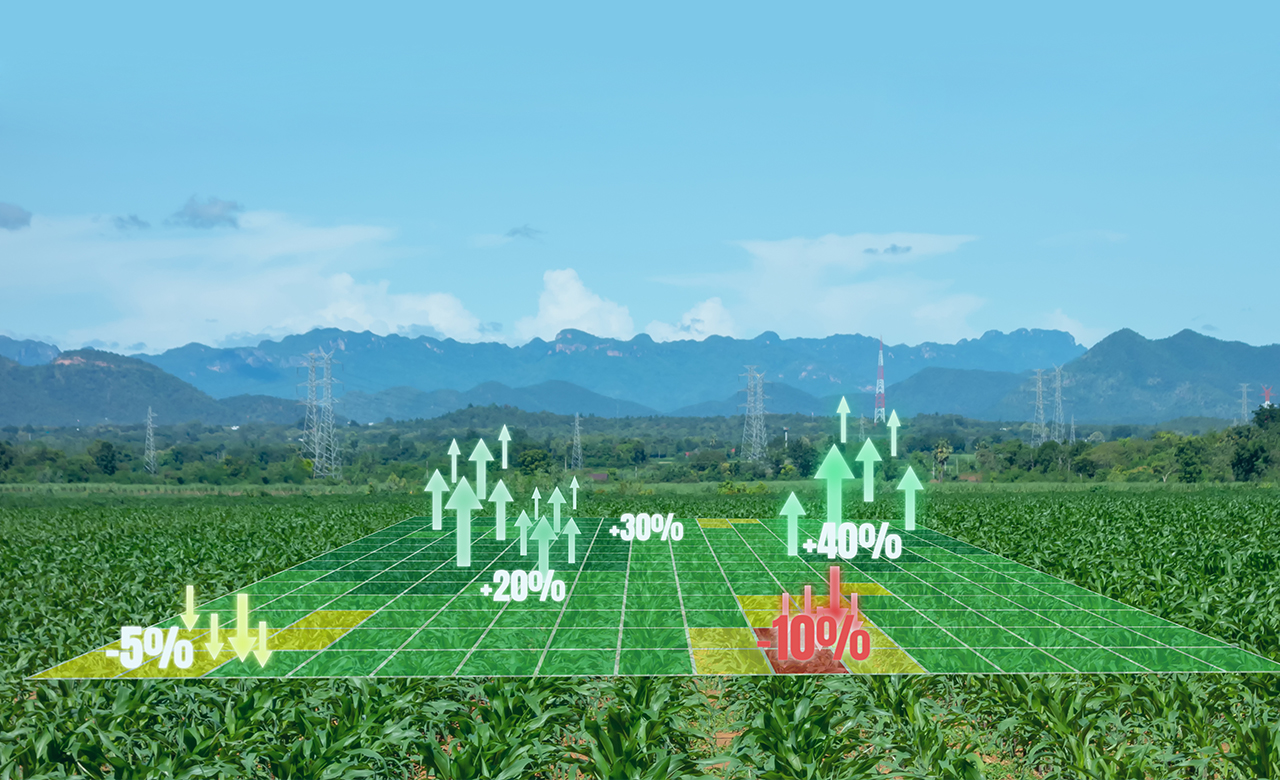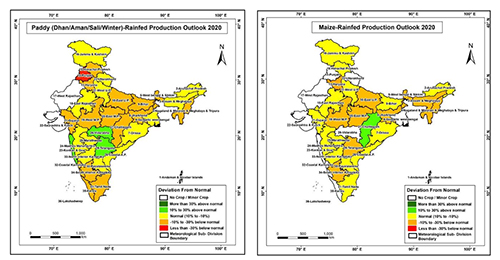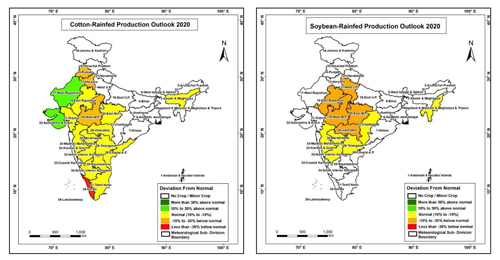
Over the last two decades, changes in the climatic conditions and erratic weather patterns have caused large-scale variations in crop production across the country. Forecasting crop production before any season’s harvest aids in a better understanding of the underlying risks and taking suitable measures for strategizing agri-input and commodity requirements. Such yield predictions provide significant information to various stakeholders such as insurers, reinsurers, insurance brokers, commodity-traders, and agri-input providers.
 Considering the significance of such pre-season requirements, RMSI Cropalytics recently unveiled Crop Outlook Report for the Kharif Season 2020. The report entails detailed district and crop-wise acreage, yield, and production outlook for 32 major crops grown across India.
Considering the significance of such pre-season requirements, RMSI Cropalytics recently unveiled Crop Outlook Report for the Kharif Season 2020. The report entails detailed district and crop-wise acreage, yield, and production outlook for 32 major crops grown across India.
Crop Weather and Yield Outlook Reports use crop yield estimation model in conjunction with India Meteorological Department (IMD) forecasted weather. These reports continue to be updated until before the harvesting of crops.
Proprietary models for crop yield and acreage prediction
RMSI Cropalytics’s proprietary models (used to estimate the crop yield and acreage) have been developed for every district and every crop separately by applying statistical -modeling technique using long-time series weather data, crop data, and crop and location-specific agronomic management practices, and the pheno-phase sensitivity of every crop and district to the climatic hazards including extreme weather events (drought and flood).
 Besides, the likelihood of pests or disease outbreak has also been factored in this model.
Besides, the likelihood of pests or disease outbreak has also been factored in this model.
District and crop-specific outlook reports have been generated to address the extensive uncertainty in crop production due to highly unpredictable weather patterns. This will help various stakeholders in planning business operations.
Highlights of Crop Outlook
Based on the current IMD rainfall forecast for 2020 south-west monsoon, the highlights of the report developed by RMSI Cropalytics are:

- Paddy (one of the major Kharif crops) is likely to have normal or above normal production in 16 meteorological sub-divisions (out of 32 met sub-divisions). In the other met sub-divisions, production is expected to be slightly below normal. It is likely to decline in Bihar, Chhattisgarh, Coastal Karnataka, East Madhya Pradesh, East Uttar Pradesh, Gujarat, Haryana, Himachal Pradesh, Jharkhand, Kerala, Nagaland, Mizoram, Meghalaya, Tripura, Punjab, south interior Karnataka, Tamil Nadu, West Bengal, Sikkim, and West Madhya Pradesh.
- Maize (one of the important foodgrains) production is likely to be normal or above normal in 15 met sub-divisions (out of 25 met sub-divisions). The production is expected to decline in Assam, Meghalaya, East Madhya Pradesh, East Uttar Pradesh, Haryana, Jharkhand, Nagaland, Mizoram, Meghalaya, Tripura, south interior Karnataka, Telangana, West Bengal, Sikkim, and West Madhya Pradesh.

- Cotton (one of the important cash crops) is expected to perform well during Kharif 2020 as it is likely to have normal or above normal production in 14 met sub-divisions (out of 19 met sub-divisions). Its production is likely to drop in 5 met sub-divisions – East Madhya Pradesh, Haryana, Kerala, Punjab, and West Madhya Pradesh.
- Soybean (one of the most important oilseeds) is likely to be normal in more than 50 percent of the met sub-divisions (in 6 out of 11 met sub-divisions). The soybean production is expected to be below normal in East Madhya Pradesh, East Rajasthan, Vidarabha, West Madhya Pradesh, and West Uttar Pradesh.

- Groundnut (an important cash crop) is projected to perform well as its production is likely to be normal or above normal in 12 met sub-divisions (out of 16 met sub-divisions). It is expected to decline in East Uttar Pradesh, Saurashtra and Kutch, South interior Karnataka, and Tamil Nadu.
- Pigeonpea (one of the most widely used pulses in India) is likely to grow well in most of the met sub-divisions as it is expected to have normal production in 14 met sub-divisions (out of 18 met sub-divisions). It has been observed that only in 4 met sub-divisions – Haryana, Jharkhand, East Uttar Pradesh, and West Uttar Pradesh – pigeonpea production is likely to be below normal.
- A marginal drop in production across the country could occur in some major crops such as paddy, cotton, maize, soybean, black gram, groundnut, pigeonpea, sorghum, green gram, and pearl millet. The production of other crops is expected to be normal.
- The projected decline in crop production can be attributed to uneven rainfall distribution pattern from June to September in the respective met sub-divisions. In addition to the total rainfall received, its distribution pattern across the rainy season (June to September) and the geography is also crucial for crop yield outlook.
RMSI Cropalytics updates its crop outlook with the change in weather projections throughout the season. Considering the importance of updating such information, RMSI Cropalytics’s Co-founder Roli Jindal said, “In the previous year, rainfall was initially predicted to be below normal. However, excess rainfall during the last phase of the monsoon led to good seasonal rainfall, resulting in flood damage in some areas and good crop production in others. It is important to continuously update our crop outlook report with fresh weather data.”
To avail the crop outlook reports, click here.
About RMSI Cropalytics
RMSI Cropalytics is a subsidiary of RMSI, and focuses on agri-tech that combines advanced modeling, machine learning, and agri and meteorological domain expertise to provide detailed information and data analytics on Indian agriculture.
For more information, visit www.rmsicropalytics.com